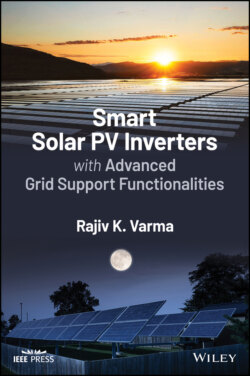Читать книгу Smart Solar PV Inverters with Advanced Grid Support Functionalities - Rajiv K. Varma - Страница 46
1.2.18 Frequency Regulation Issues due to Reduced Inertia
ОглавлениеIncreasing penetration of IBRs such as solar PV, wind, BESSs, etc., and the retirement of large conventional thermal synchronous generators is leading to a substantial decline in inertia in power systems. Reduced inertia can have the following consequences [11, 13]:
1 Larger or steeper ROCOF resulting in shorter time to reach UFLS thresholds.
2 Load shedding thresholds are reached even before the PFR or FCR becomes available.
3 Lower nadirs and activation of UFLS will result in potential disconnection of domestic customers.
4 Faster frequency variations may adversely impact system protection.
5 Low‐frequency conditions may cause generators to trip. Loss of generation can potentially lead to cascading effects and a partial or even full system blackout.
6 Risk of islanding segments of distribution networks with large number of solar PV systems.
7 Lack of rotating inertia also presents problems in microgrid environments, where there are no large conventional generators to stabilize the system frequency.
Some other important considerations regarding low inertia systems are as follows [13]:
1 In large interconnected systems, the level of electromechanical damping in different regions may also have an impact. This can result in a higher ROCOF close to the lost generation than at locations farther in the system. Hence locational impacts of system inertia and disturbance need to be examined.
2 The loss of generation may result in system islanding where a small part of the system gets separated and operates autonomously. Since the inertia of the islanded system is even lower than the main low inertia system, different control challenges such as system oscillations may be experienced. Such islands may form even in distribution networks.
